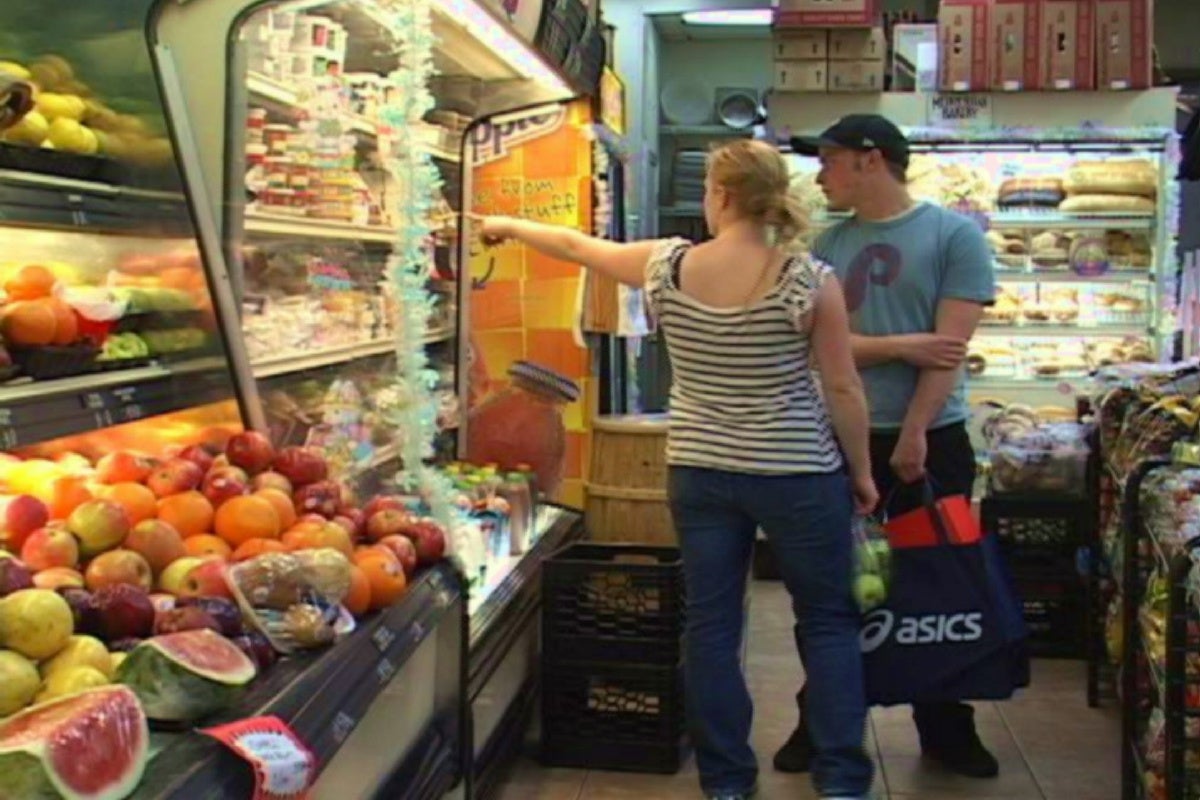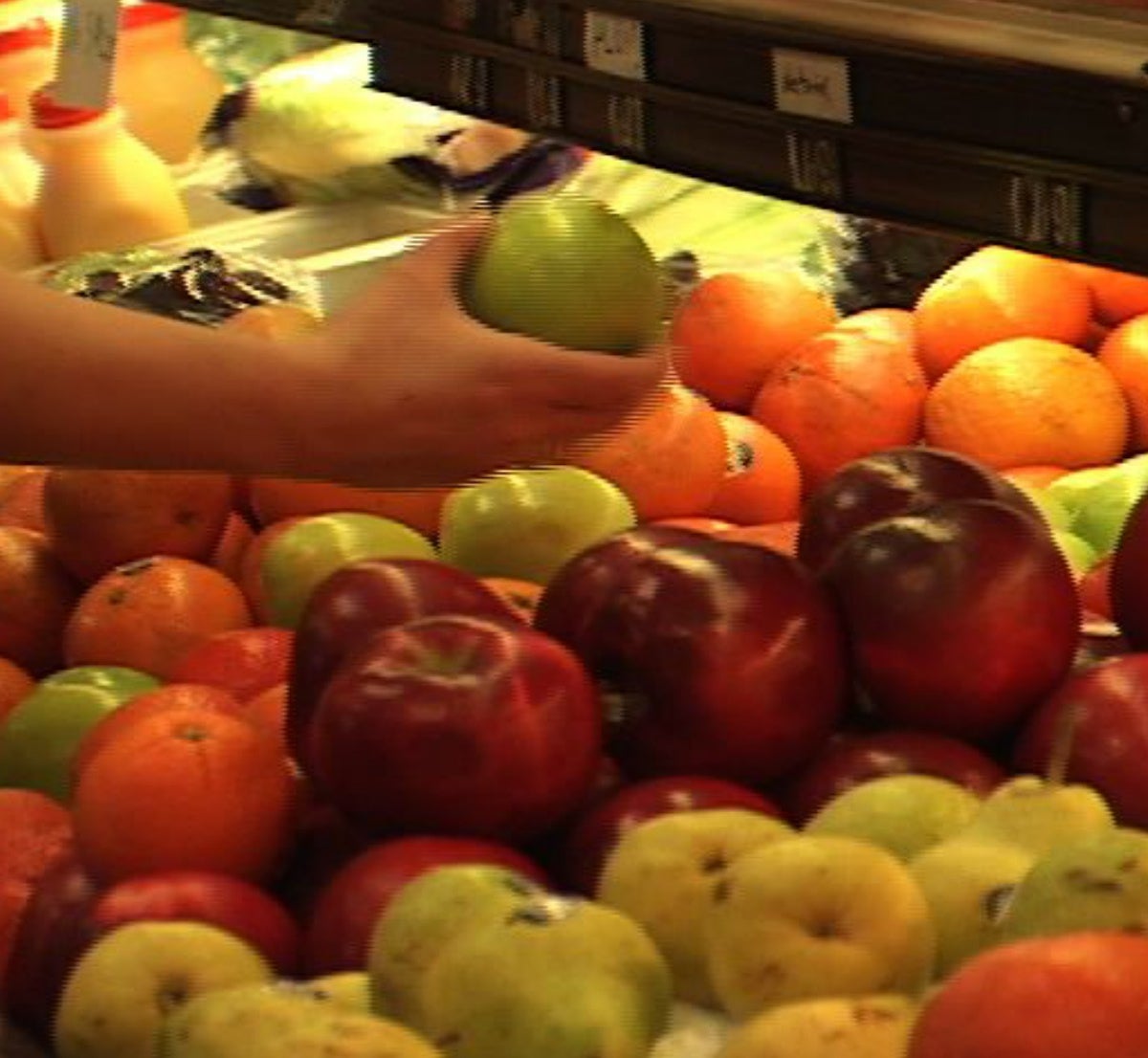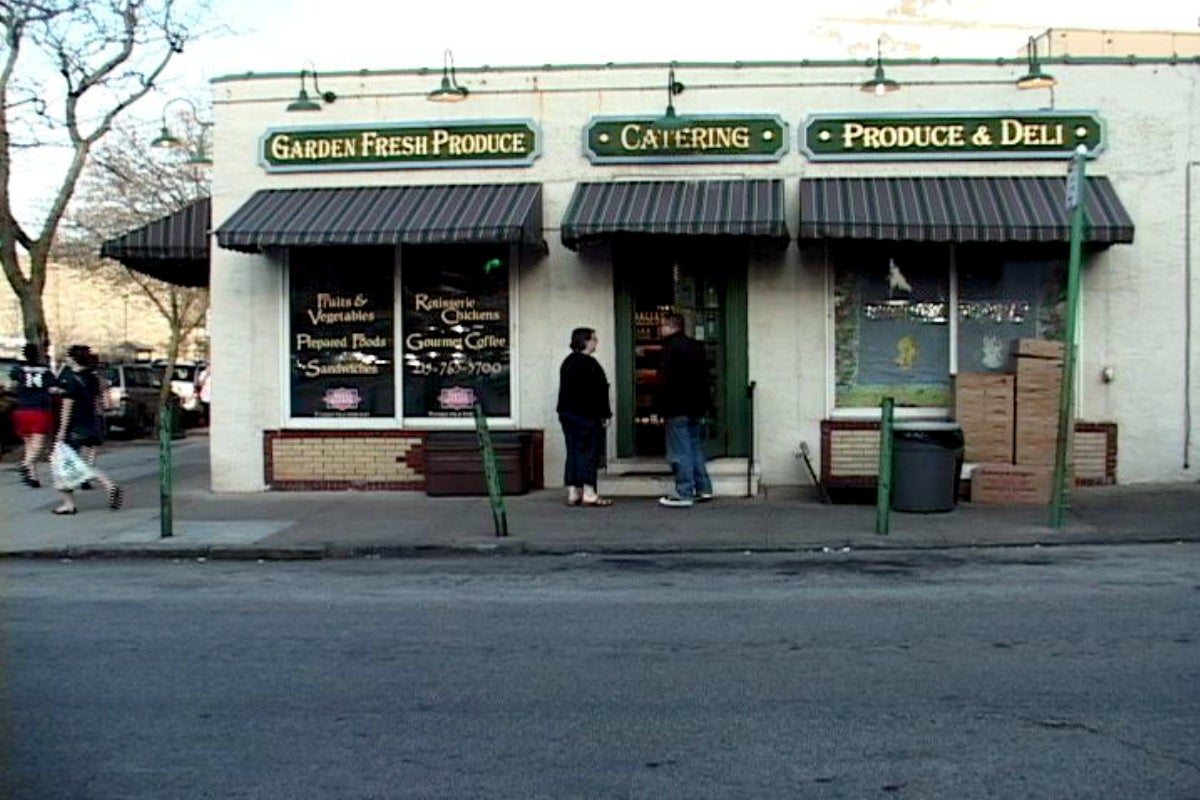Francisville: The Importance of Fresh Food
By Mary Mazzoni
For PlanPhilly
This article was created in partnership with Philadelphia Neighborhoods, Temple University’s capstone multimedia journalism class.
Katie Searl hoped to cut back on the use of her car by moving to the city last year. The Francisville resident works across the street from her home, making for an easy vehicle-free commute.
She said she’d hardly use her car at all if it weren’t for trips to the grocery store.
Like a great deal of North Philadelphia neighborhoods, Francisville is located in what many planning organizations call a “food desert” – lacking options for grocery shopping other than corner convenience stores.
For residents living in one of these food deserts, shopping for groceries means paying high prices for pre-packaged foods at small markets or taking a car or bus to another neighborhood.
“It’s walkable,” she said of the distance to the closest supermarket. “But not when you’re coming back with a lot of groceries.”
Searl noted that many of her neighbors do their shopping at one of the few corner stores in the neighborhood but said these stores don’t have enough healthy options for her.
“We have a few corner stores, and they do get a lot of traffic,” she said. “However, people who are going there tend to buy pre-packaged foods. They don’t have a lot of good healthy choices.”
Residents who can’t travel outside the neighborhood for their shopping aren’t left with many options.
The CVS Pharmacy at Broad Street and Girard Avenue is one of the only places to buy food other than corner stores. Food prices at the pharmacy are high when compared to suburban grocery chains, and selection is very limited – with little or no fresh food.
sp1123planmazzoniindividual from Philadelphia Neighborhoods on Vimeo.
Representatives from the Philadelphia Department of Public Health expressed concern about the implications a lack of fresh and affordable food can have for residents.
“Access to healthy and affordable foods is a really big issue for Philadelphians and really a lot of people across the country,” said Dr. Giridhar Mallya, the director of public policy and planning for the department. “These issues of food access affect overweight and obesity but then also related illnesses like diabetes, high blood pressure and heart disease.”
Philadelphia has been hit hard by these detrimental effects. More than 33 percent of adults living in Philadelphia County have hypertension, and 11.9 percent are living with diabetes, according to the Public Health Management Corp.
The city noted these numbers in its city-wide comprehensive plan, Philadelphia 2035, and created the Get Healthy Philly initiative to help residents live healthier lifestyles.
“What the Department of Health is trying to do through Get Healthy Philly is make healthy behaviors easier for people to engage in,” said Mallya, who is also program director for the initiative. “It’s fine to tell people to eat more healthfully, but if they don’t have healthy and affordable food in their neighborhood, it’s pretty hard to do.”
The city hopes to make healthy habits easier for Philadelphians by opening farmers markets in underserved communities and providing training, technical assistance and mini-grants to help corner store owners sell more fresh food.
In partnership with The Food Trust, the Get Healthy Philly team is working with more than 500 businesses through the Healthy Corner Store Initiative and will provide mini-grants to 100 of those stores over the next 12 months.
“Not every neighborhood is going to have a supermarket, but every neighborhood has a corner store, if not many corner stores,” Mallya said. “So, we are really trying to work with those small business owners to provide healthier products to people in the community.”
Increasing access to fresh food is only the first step. Teaching children the importance of a healthy and tasty meal is an equally important goal, Mallya said.
“We are also working with schools, after-school programs and recreation centers throughout the city, including organizations in Francisville,” Mallya said.
He and his team are working to reinvent the subsidized meals children are eligible for in after-school settings and make them more nutritious and complete, Mallya said. They’ve made the change in 40 of the 98 recreation center based after-school programs in the city and plan to expand in the upcoming year.
The Francisville Neighborhood Development Corp. has also recognized the problem with fresh food access in the community and planned a different approach – growing food themselves.
Members noted increased community gardening as a key goal in the neighborhood plan entitled Moving Francisville Forward: A Blueprint for the Future, drafted in partnership with People for People Inc. and Interface Studio.
With the help of the “Clean and Green Volunteer Team,” the organization established pocket parks in nearly every section of the neighborhood and planted apple, peach, walnut and fig trees, as well as patches of blueberries, strawberries, and other fruits and vegetables.
Penelope Giles, founder and president, said she hopes to expand the neighborhood’s food production this summer.
For Giles, expanding food production in the neighborhood isn’t all about instant gratification. It’s about creating fresh food access for generations to come.
“We’re installing a permaculture system within the neighborhood by planting all of these nut and fruit trees,” Giles said. “Francisville will be a place where you can walk through the neighborhood and, when the vineyards are ripe, you can snip bunch of grapes, or you can walk past a peach tree and get yourself a basket of peaches.”
“We think it’s a great goal in terms of reconnecting people to the environment and getting them to understand that you don’t have to buy everything from the grocery store,” she continued.
An urban food production network may seem like a lofty goal, but Beth Miller, executive director of the Community Design Collaborative – a volunteer-based design center that provides pro bono services to nonprofits, said it may be a feasible one for the neighborhood.
WHYY is your source for fact-based, in-depth journalism and information. As a nonprofit organization, we rely on financial support from readers like you. Please give today.






